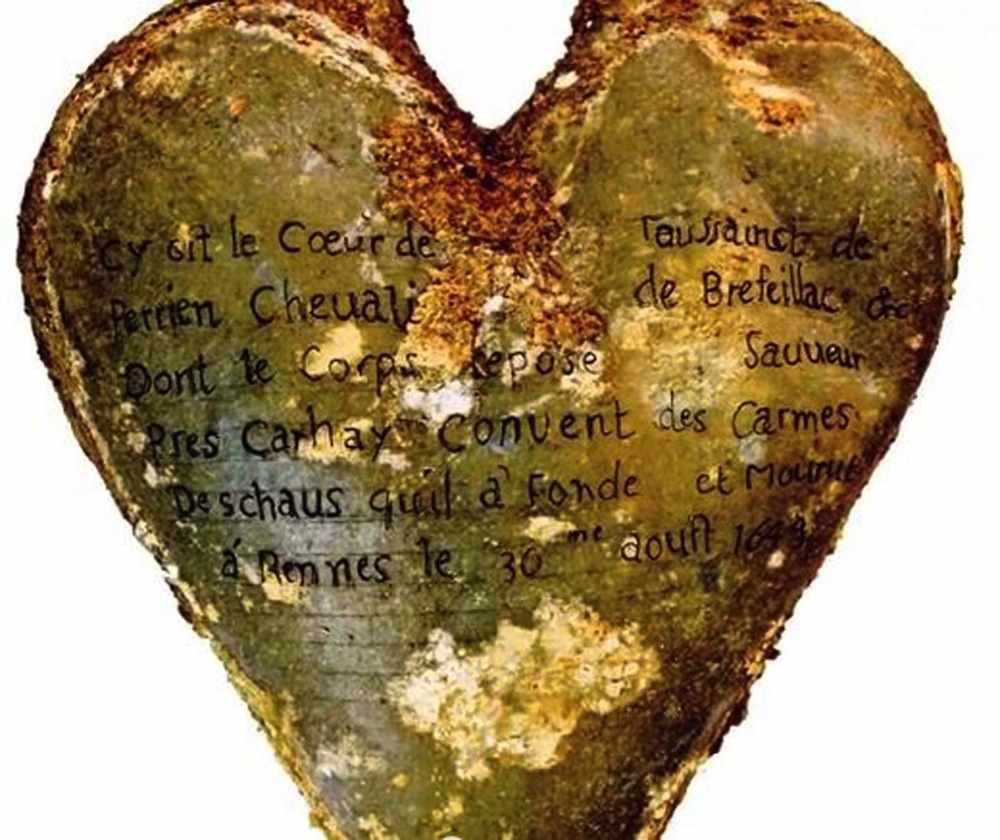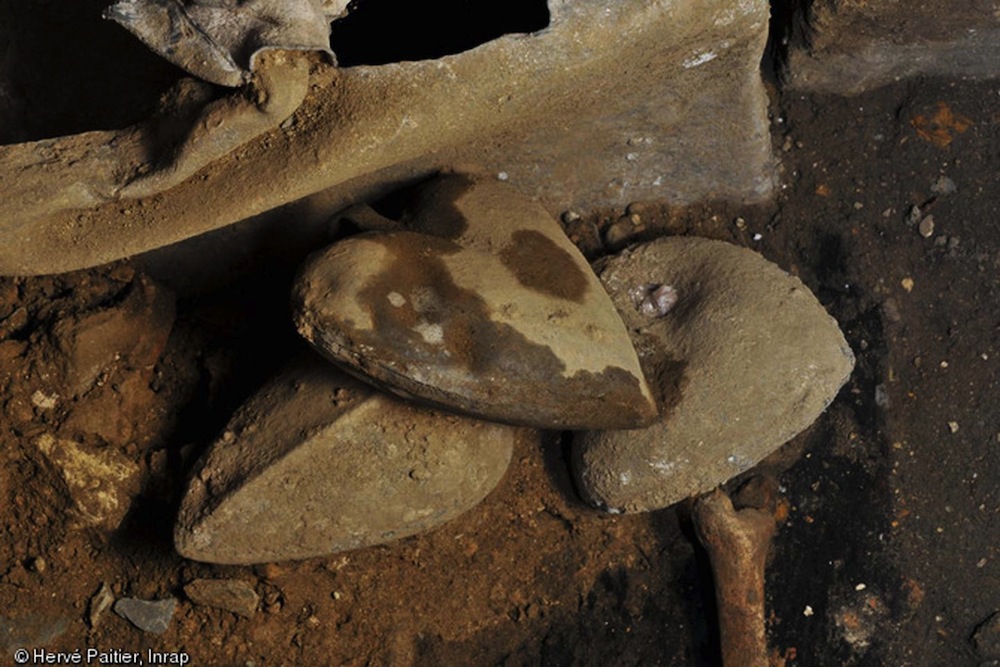400-Year-Old Embalmed Hearts Found Under French Convent

Four hundred years after they were buried in heart-shaped lead urns, five embalmed human hearts have been discovered in a cemetery in northwestern France.
Scientists said they were able to peer inside those organs with modern medical imaging techniques, revealing the hearts' chambers, valves and arteries, some still bearing marks of disease.
The hearts were discovered underneath the basement of the Convent of the Jacobins in Rennes, where archaeologists with France's National Institute for Preventive Archaeological Research have been excavating graves for the past several years, ahead of a plan to turn the site into a conference center. [The 10 Weirdest Ways We Deal With the Dead]
So far, the archaeologists have unearthed hundreds of burials dating back to the late 16th or early 17th centuries, including the well-preserved corpse of a widow named Louise de Quengo, Lady of Brefeillac, who died in 1656. De Quengo's body had been sealed in a lead coffin, and when that container was opened for an autopsy recently, the woman's clothes —a cape, linen shirt, wool leg warmers and cork-soled shoes —were remarkably still intact, according to a report in The Guardian.
Inside de Quengo's coffin, archaeologists also found a lead case containing the heart of her husband, Toussaint Perrien, Knight of Brefeillac.
"It was common during that time period to be buried with the heart of a husband or wife," Dr. Fatima-Zohra Mokrane, a radiologist at Rangueil Hospital at the University Hospital of Toulouse in France, who led the new study, said in a statement. "It's a very romantic aspect to the burials."

Four other heart-shaped urns had been discovered in the funerary vaults of elite-class families at the Convent of the Jacobins. In an effort to learn more about the health of those 400-year-old hearts, Mokrane and a team of scientists cleaned the organs and removed the embalming material so that they could scan the hearts using magnetic resonance imaging (MRI) and computed tomography (CT).
Sign up for the Live Science daily newsletter now
Get the world’s most fascinating discoveries delivered straight to your inbox.
"Since four of the five hearts were very well-preserved, we were able to see signs of present-day heart conditions, such as plaque and atherosclerosis," Mokrane said in a statement.
One heart showed no signs of disease, but three others showed a buildup of plaque on the coronary arteries, which can cause a blockage of the heart, Mokrane and her colleagues found. The findings were reported Wednesday (Dec. 2) at the annual meeting of the Radiological Society of North America, in Chicago.
It's not the first time scientists have studied preserved hearts from the archaeological record. After England's King Richard I, nicknamed "Richard the Lionheart," died in 1199, his heart was embalmed separately from his body and deposed in the church of Notre-Dame in Rouen. A study published in the journal Nature Scientific Reports in 2013 found that the king's heart had been treated with myrtle, daisy, mint, frankincense, creosote and mercury—substances that were likely inspired by both biblical texts and the necessities of preservation.
Follow Live Science @livescience, Facebook & Google+. Original article on Live Science.










